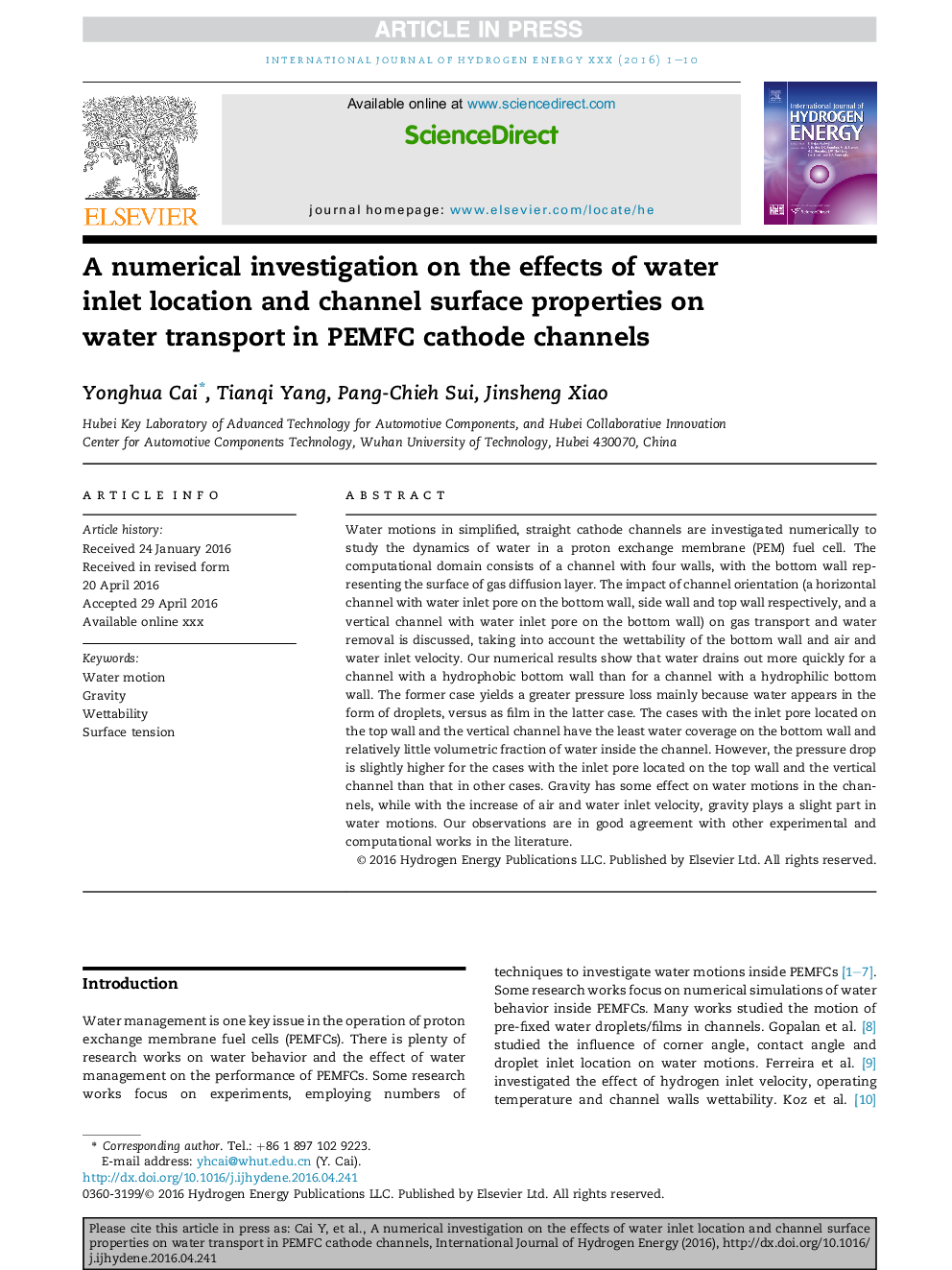| Article ID | Journal | Published Year | Pages | File Type |
|---|---|---|---|---|
| 5147896 | International Journal of Hydrogen Energy | 2016 | 10 Pages |
Abstract
Water motions in simplified, straight cathode channels are investigated numerically to study the dynamics of water in a proton exchange membrane (PEM) fuel cell. The computational domain consists of a channel with four walls, with the bottom wall representing the surface of gas diffusion layer. The impact of channel orientation (a horizontal channel with water inlet pore on the bottom wall, side wall and top wall respectively, and a vertical channel with water inlet pore on the bottom wall) on gas transport and water removal is discussed, taking into account the wettability of the bottom wall and air and water inlet velocity. Our numerical results show that water drains out more quickly for a channel with a hydrophobic bottom wall than for a channel with a hydrophilic bottom wall. The former case yields a greater pressure loss mainly because water appears in the form of droplets, versus as film in the latter case. The cases with the inlet pore located on the top wall and the vertical channel have the least water coverage on the bottom wall and relatively little volumetric fraction of water inside the channel. However, the pressure drop is slightly higher for the cases with the inlet pore located on the top wall and the vertical channel than that in other cases. Gravity has some effect on water motions in the channels, while with the increase of air and water inlet velocity, gravity plays a slight part in water motions. Our observations are in good agreement with other experimental and computational works in the literature.
Related Topics
Physical Sciences and Engineering
Chemistry
Electrochemistry
Authors
Yonghua Cai, Tianqi Yang, Pang-Chieh Sui, Jinsheng Xiao,
